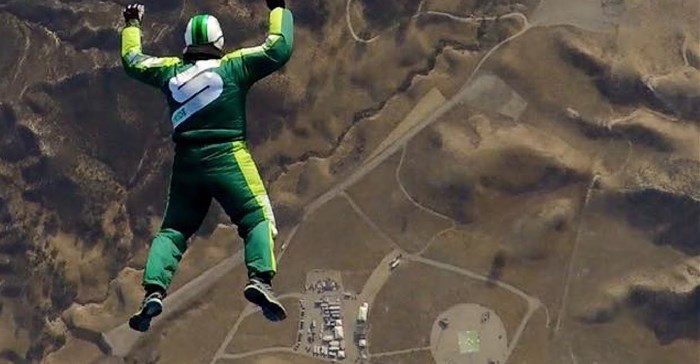#Loeries2016: The theory of stress wood
First, let me remind you who Smith is. He is a great big bear of an ad man, in fact there’s a passing resemblance to Samuel L Jackson in The Caveman’s Valentine, with an impressive pedigree, who owns Amusement Park.
Taking the plunge
The blurb on the company’s website – “we craft engaging brand stories that connect with consumers on every media platform”. Pretty standard ad agency sell, right? But if you can persuade your client to risk their brand reputation on a man hurtling through the air from 25,000ft (more than 7,000 metres) and landing safely, then you’ve got a serious pair on you.
"When it was brought to us, we were looking for a way to launch our new Stride gum, whose brand identity is that it’s ‘mad intense’," said Laura Henderson, global head of content and media monetisation at Stride parent, Mondelez International. "We knew that Heaven Sent would be one of the most mad intense stunts ever attempted, and it was the perfect embodiment of what new Stride gum is all about.”
The gamble paid off, the stunt has generated more than 700 press hits and 500m impressions internationally.
Anyway, that’s not the botany lesson, but illustrates that you have to be resilient and take risks to really achieve what you want. And this all relates to one of the points Smith made about ownership in his seminar presentation.
We all need stress wood
He talks about the Biosphere 2 experiment, where scientists built a mini world in the Arizona desert to see it they could replicate the earth’s environment, just in case global warming goes completely haywire, there’s a Zombie Apocalypse or something equally catastrophic.
One of the anomalies that came out of the experiment is that even though trees grew much faster in the fake world, they reached a point where they just stopped thriving. The scientists concluded that trees need wind to survive.
Trees need to be put under pressure by the wind to build up a load-bearing structure. This is called stress wood. This structure positions the tree where it’d get the best light, or other optimum resources, and is the reason why trees are able to contort towards best light and still survive loads in even awkward shapes. Think of some of those bent-out-of-shape trees in Cape Town, which despite the almost constant pummelling by the wind, still grow.
Can you see where this is going?
Smith uses stress wood as an analogy for starting your own business. “I had to sell my house and my car, I needed a little stress wood to create some magic,” he says. In other words, you have to be adaptable and be willing to bend and take your failures as lessons to eventually reach your goals.



























